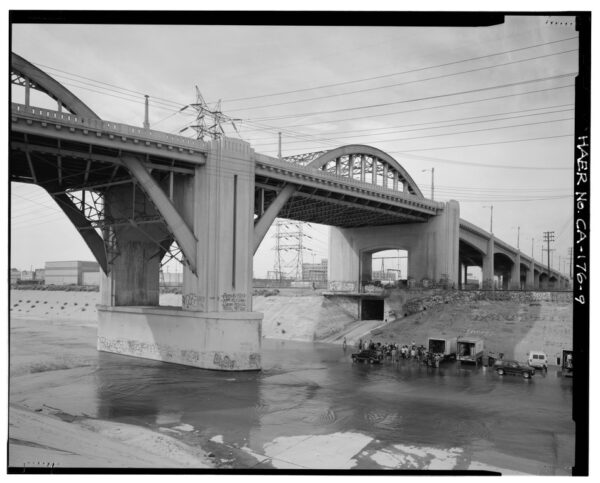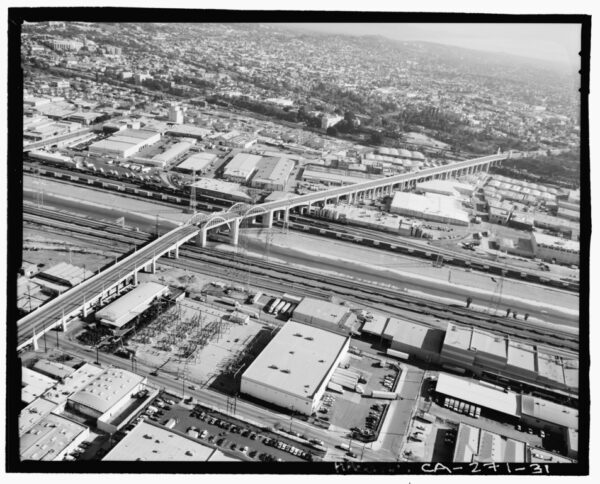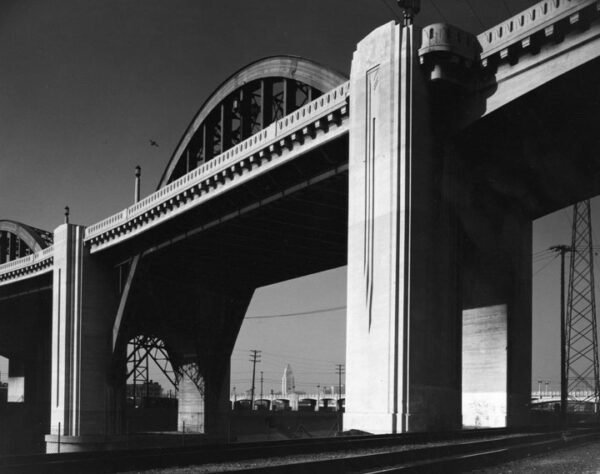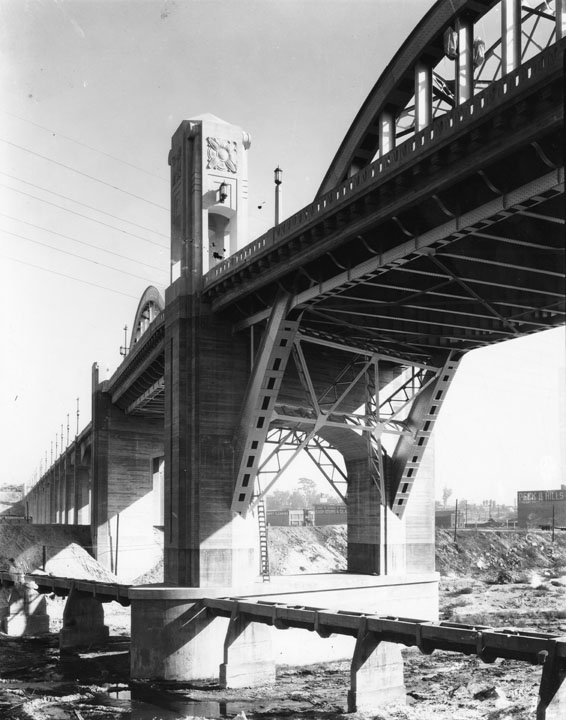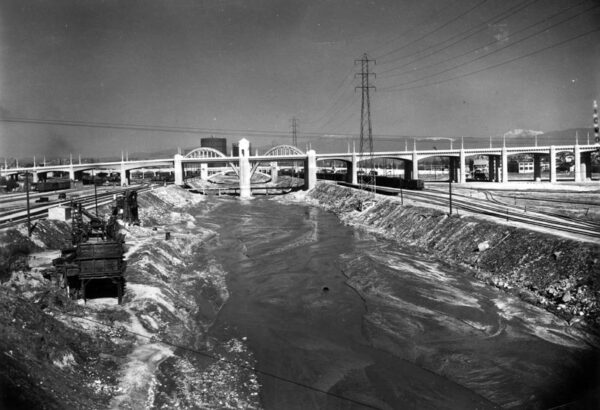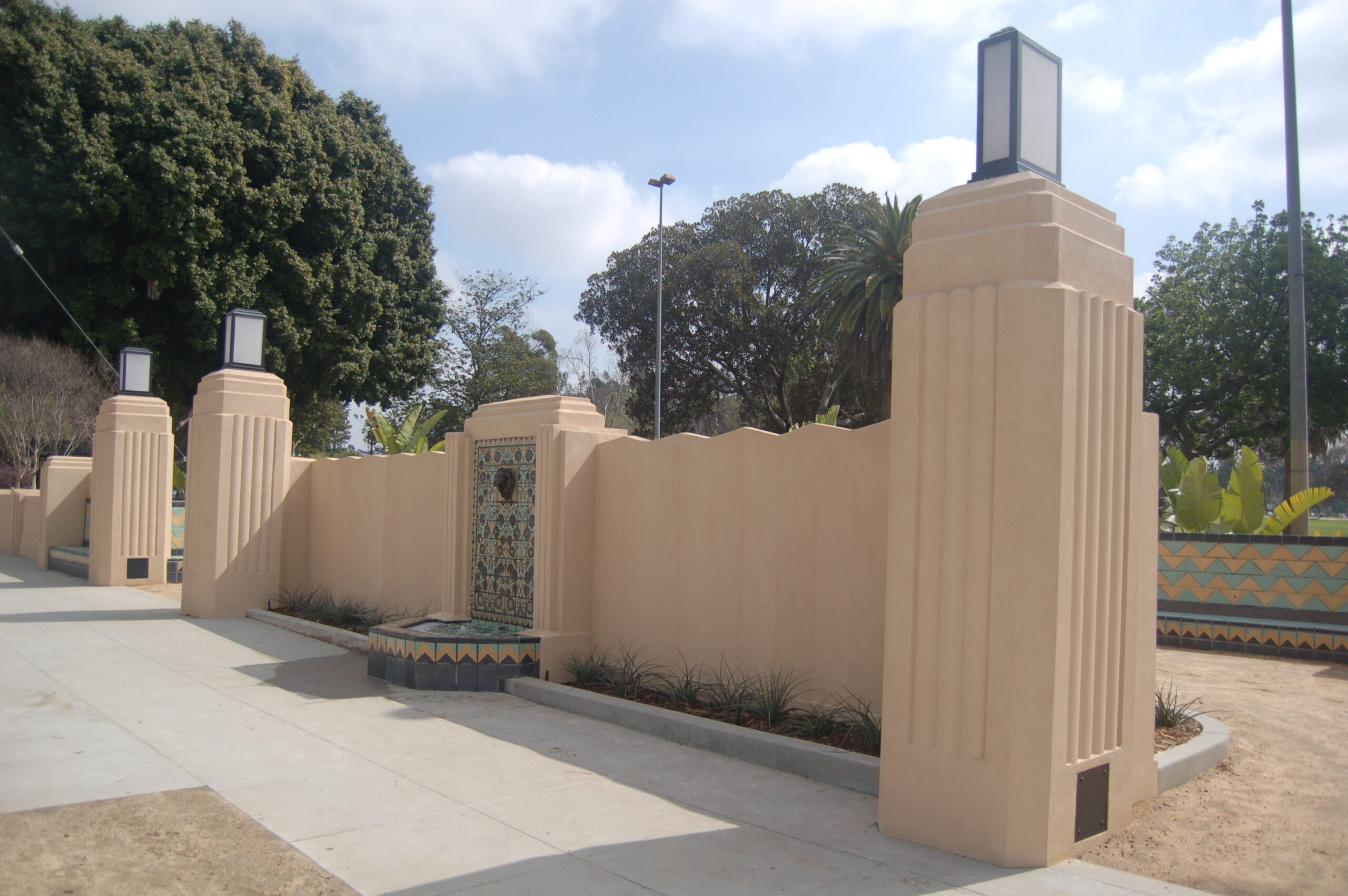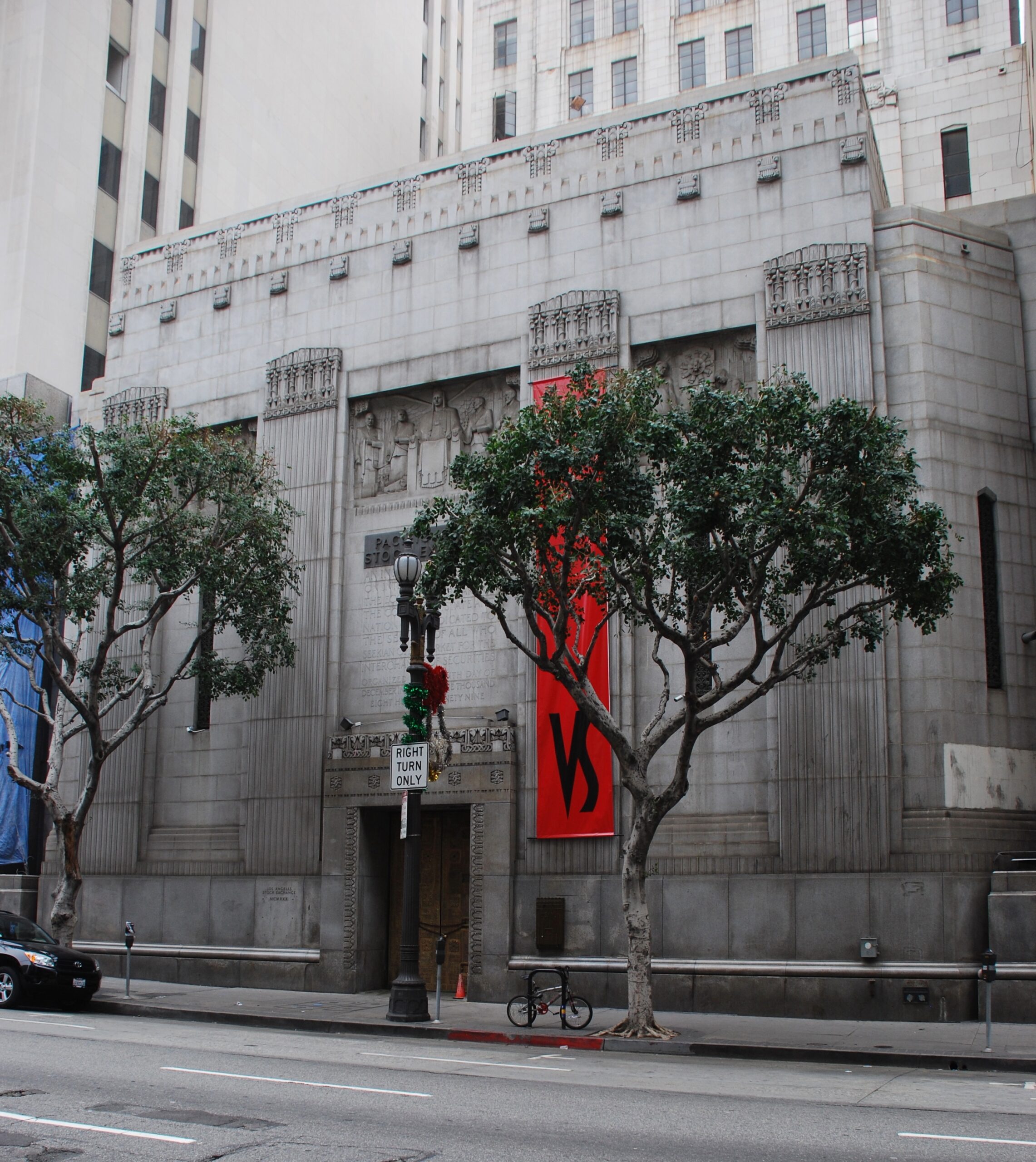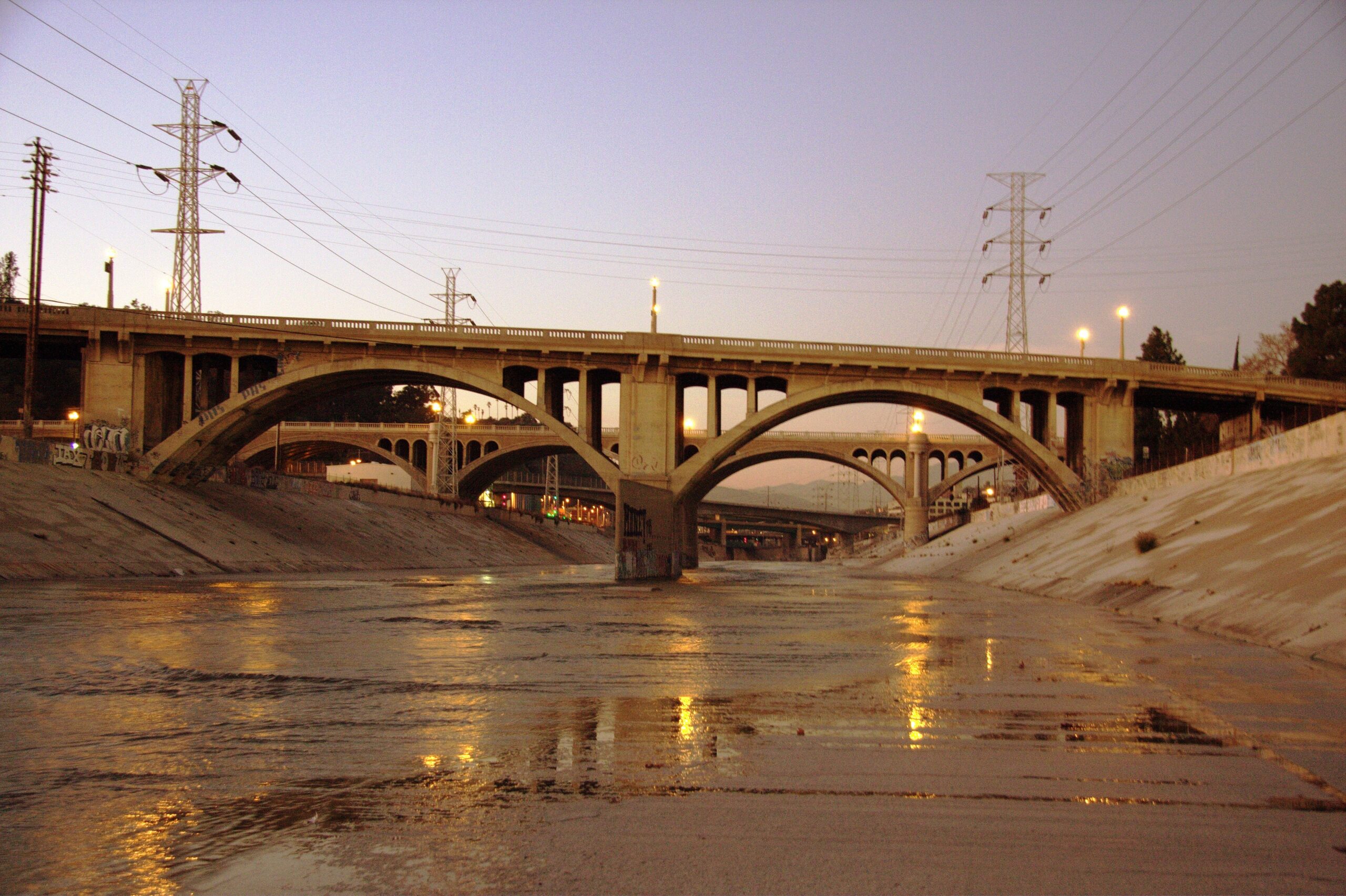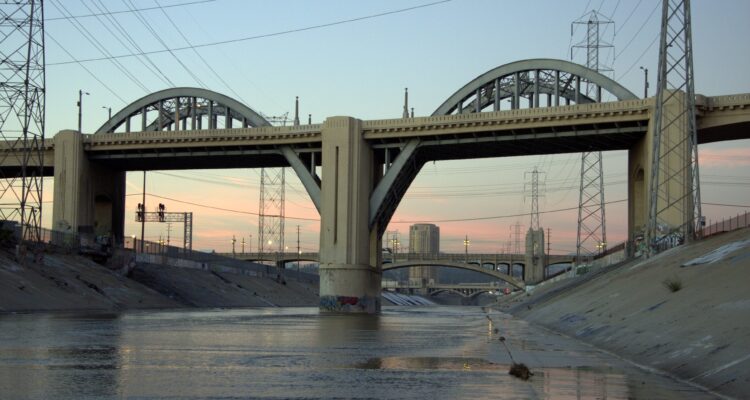
Place
Sixth Street Viaduct
Built in 1932, the two-thirds-mile-long Sixth Street Viaduct is the last-built and grandest of the monumental river bridges, with its graceful steel arches and Classical Moderne design.
Lost
We are very sad to acknowledge that the 1932 Sixth Street Viaduct cannot be saved.
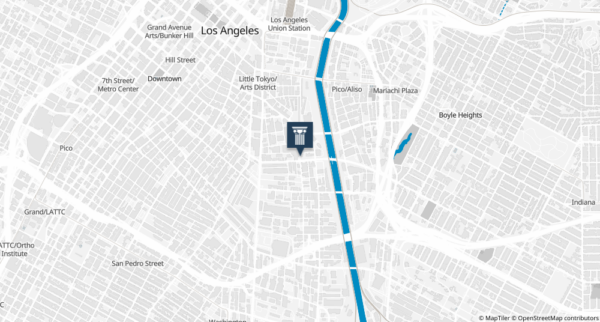
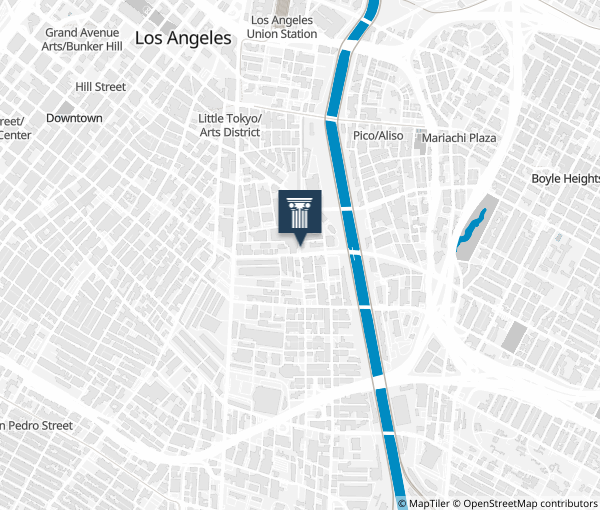
Place Details
Address
Architect
Neighborhood
Year
Style
Decade
Designation
Property Type
Government Officials
Community
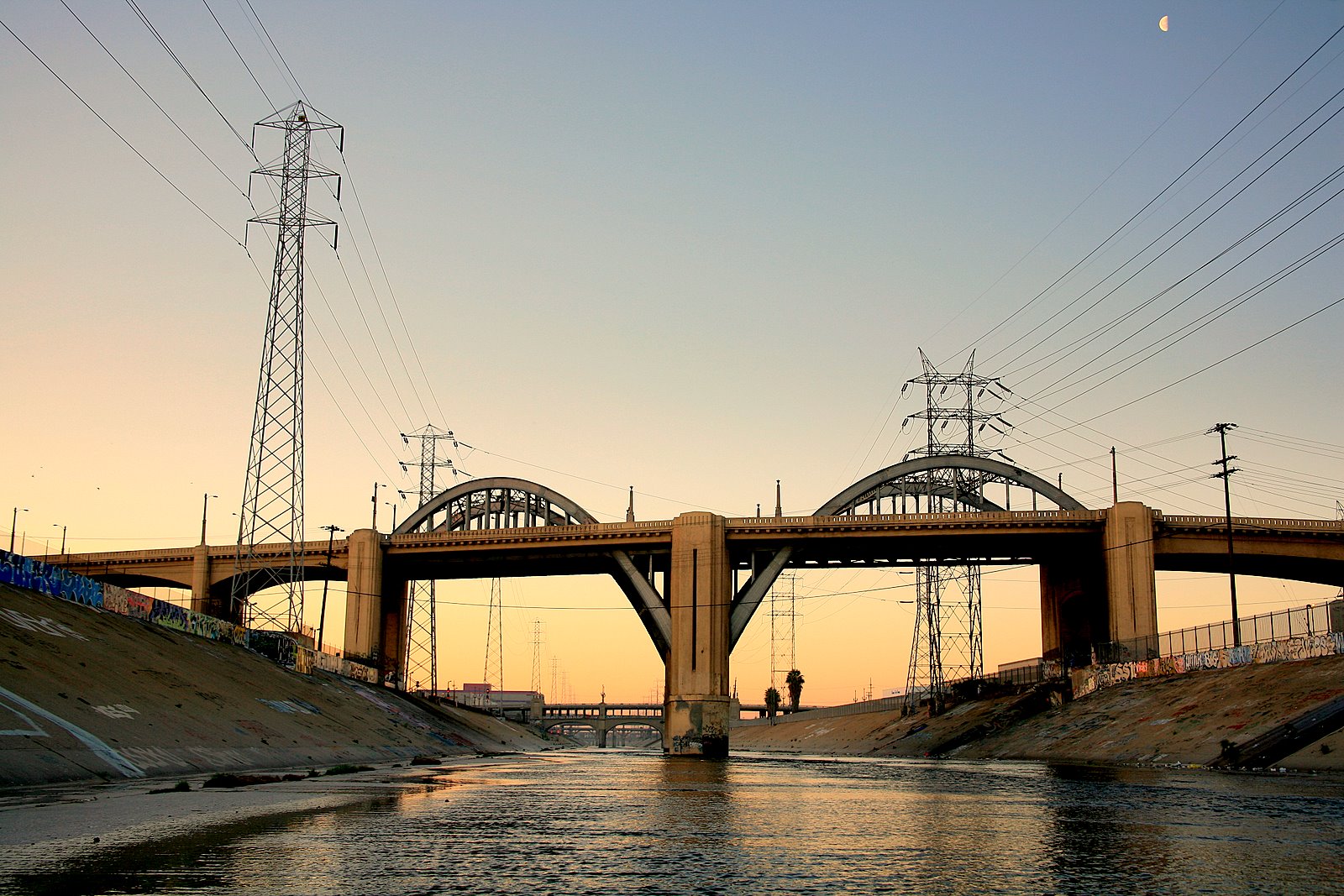
Photo by Kevin Break
Overview
Following the certification of the final environmental impact report (FEIR) for the Sixth Street Viaduct Seismic Retrofit Project, the City held a design competition to solicit designs for the replacement viaduct and selected the firm HNTB Corp. in October 2012. Construction is expected to last three years with an estimated completion in 2019. Before the demolition of the Sixth Street Viaduct, a documentary film will be created as part of the mitigation for its loss.
Hundreds attended a farewell festival for the bridge in October 2015. The City closed the span in preparation for demolition in January 2016.
The demise of the bridge will be a tremendous loss to the history and landscape of Los Angeles, and to the many Angelenos who care so deeply about this icon.
Intensifying the loss is the fact that the bridge is a designated landmark, or Historic-Cultural Monument (HCM).
We thank the City’s Cultural Heritage Commission and Office of Historic Resources for their hard work and close collaboration in the preservation effort.
About This Place
About This Place
Built in 1932, the two-thirds-mile-long Sixth Street Viaduct is the last-built and grandest of the monumental river bridges, with its graceful steel arches and Classical Moderne design.
The bridge stands as an iconic gateway to both sides of the Los Angeles River and was determined eligible for listing in the National Register of Historic Places in 1986. Featured in countless films, television shows, and commercials, it is the most widely recognized of the historic river bridges.
In 2008, the bridge was designated as Los Angeles Historic-Cultural Monument #905.
The bridge closed on January 27, 2016 to prepare for demolition. Unfortunately, the bridge cannot be saved due to the alkali-silica reaction (ASR) that is slowly destroying it and making it unsafe. Learn more on our issue page.
In 2007, the Sixth Street Viaduct was diagnosed with alkali-silica reaction (ASR). ASR is a process by which alkali and silica components in the concrete combine with moisture to form a gel that expands, causing cracking and weakening of the structure.
The Conservancy acknowledged first and foremost the importance of ensuring public safety, but we asked for a thorough evaluation of preservation alternatives and consultation with bridge engineers who have experience working with ASR before any replacement scenarios were considered.
In September 2007, the Conservancy submitted detailed comments on the Notice of Preparation of the draft environmental impact report for the replacement project. The initial study identified only one retrofit alternative, compared to at least four alignments and myriad designs for replacement spans, revealing a bias in favor of demolition.
The Conservancy’s comments asked the BOE to consider at least two retrofit alternatives that meet current safety standards, using different technologies available for treating ASR. The Conservancy also proposed a combined retrofit and partial replacement alternative that prioritized retention of the iconic, arched section of the bridge over the river. Although the viaduct stretches over 3,500 feet, the arched section comprises only a small portion of the total length at less than 400 feet.
In February 2009, Conservancy staff attended a presentation by the BOE of their preferred option. BOE staff recommended replacement of the historic viaduct with a new cable-stayed bridge.
On November 18, 2011, the Los Angeles City Council certified the final environmental impact report (FEIR) for the Sixth Street Viaduct Seismic Retrofit Project. The report calls for the replacement of the historic bridge with a widened and realigned cable-stayed suspension bridge of modern design.
Our Position
Each bridge has unique qualities, challenges, and circumstances. While the Conservancy generally does not favor replication, we consider it acceptable in the case of materials failure, and if it’s done the right way.
We supported the Cultural Heritage Commission’s recommendation to City Council for a different project alternative that would replicate the main span of the bridge. We believe this approach would have maintained the structure’s eligibility as a Los Angeles Historic-Cultural Monument—which was our goal all along.
However, with the widening of the North Spring Street Viaduct, the Conservancy has supported an innovative approach that does not involve replication.
We have learned a lot through this process, including the fact that there is no consistent approach to historic bridge preservation in the U.S. We’re charting new territory and will use what we’ve learned as we move forward.
The Sixth Street Viaduct is the largest, last built, and most famous member of a remarkable collection of monumental bridges spanning the Los Angeles River. These bridges were designed to complement one another, making the collection a de facto historic district.
The Conservancy feels strongly that the design of the new bridge should fit in with the collection, not stand alone. We believe that new design can and should be exciting, contemporary, and sustainable—but also contextual.
This regrettable outcome for the Sixth Street Viaduct presents an important opportunity for Los Angeles to assert itself as a city that looks to the future without ignoring its past.
The City should think of, plan for, and consider the river bridges—including the replacement for the Sixth Street Viaduct—as a cohesive ensemble. The new bridge can make a statement without overwhelming its neighbors.
